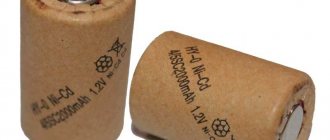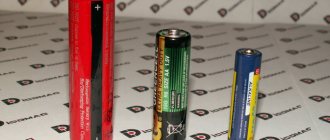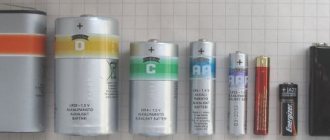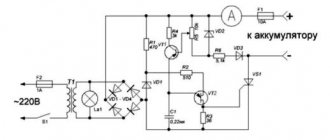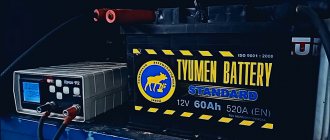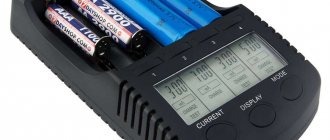When it comes to battery conversion 18650 (for a screwdriver with Ni-Cd/Ni-MH or a household storage device like Tesla Powerwall), then many manuals and instructions are silent about the methods of connecting batteries: soldering, welding or something else?
Not all connection options are suitable for durability and even safety. 18650.
Updated 02/04/2021. We propose to consider the correct and acceptable 18650 connection options with an emphasis on real-world consequences and engineering understanding of the processes. Thank you for your feedback in the comments here and on Ya.Zen—we have updated the article to reflect your experiences.
Is it possible to solder 18650 batteries?
It is forbidden ! This is the wrong approach. “ But if you’re very careful, it’s possible ,” is the approach in DIY communities. What is the catch, what should you be wary of?
When connecting 18650 batteries into a large battery (from laptops to vehicles), the task is to ensure reliable contact without losses, resistant to external influences (shock, temperature, and so on - depending on the purpose of application). Many lovers of DIY crafts consider soldering as one of the options.
Lithium-ion batteries (18650 and any other Li-Ion) when heated from a soldering station (or even a low-power soldering iron) are destroyed in their structure and irreversibly lose capacity!
That is, solder 18650 batteries unless absolutely necessary. Or you will have to put up with a change in chemical composition and deterioration in performance.
In addition, the solder connection is unreliable if the battery overheats. The method is also impractical for compact assembly due to random solder shapes and vulnerability to external influences.
What does connecting batteries do?
Due to the laws of chemistry and physics, one battery cell does not always meet the power requirements of consumers. This problem can be circumvented by connecting the batteries in parallel or in series.
Voltage increase
A single battery bank produces a voltage determined by the electrochemical reactions taking place inside it during charge or discharge. For the most common types, the output level when fully charged is:
- Lithium-ion – 3.7 volts.
- Nickel-cadmium - 1.38 volts.
- Lead-acid - 2.1 volts.
- Nickel metal hydride - 1.25 volts.
In many cases, this is not enough for the normal operation of the powered network. So, for normal operation of motorcycles, at least 6 volts are required, and for cars - 12 volts, and sometimes 24 volts. A single element cannot produce such a voltage, therefore, to increase the output level, the cells are connected in series.
Capacity increase
If we do not take into account the influence of external factors (temperature, etc.), then the capacity of one cell is determined by:
- specific capacity (depending on manufacturing technology);
- battery sizes.
It is often more convenient to obtain the required capacity not from one large can, but from several elements that are smaller in weight and size. For example, it is advisable to use cans of standard sizes. For this purpose they must be connected in parallel. At the same time, their capacity is folded.
What do professionals use to properly connect 18650?
You can achieve reliability and safety in assembling a battery from several batteries using professional methods. There are also unpopular approaches that have also proven to be practical and safe. Here's a complete list.
How to properly connect 18650 batteries:
- • resistance welding (spot);
- • using factory holders (holders - see below);
- • neodymium magnets (powerful eternal magnets);
- • gluing;
- • liquid plastic.
Professionals use the single most trouble-free method of 18650 spot welding - this method is recommended for industrial assembly of products, amateur DIY, and service repairs of consumer products. An example of budget spot welding for home use was discussed in detail on Geektimes.
Popular in the DIY community are rare earth neodymium magnets For long-term, compact projects, liquid plastic or even glue is best.
To quickly assemble a battery pack from several 18650 batteries, you can buy holders with a plastic case on Aliexpress . They cost only 60 rubles to connect a pair of 18650 , they are already equipped with factory pressure contacts that do not heat up in the connections. For manual soldering without fear of overheating, lithium-ion batteries are very convenient and compact for crafts.
Connection diagrams
For different types of connections, the terminals of the cans are connected to each other in different ways.
Sequential
When connected in series, the batteries are connected in a chain with opposite terminals. The positive terminal of one can is connected to the minus of the other , and the negative terminal to the plus of the third. This way you can connect any number of elements to obtain the required voltage, which is removed from the free terminals of the outer links. The capacity of the chain will be equal to the capacity of one jar.
A series chain of three lead-acid cans to produce a voltage of 6.3 volts.
Parallel
, the positive terminals of all elements and all negative ones are connected to each other . Power is removed from the positive and negative buses in a convenient place. The assembly voltage will be equal to the voltage of one cell (therefore, it is necessary to use cells of the same type with equal output voltage), and the capacitance will be the sum of all capacitances.
Parallel connection increases the total capacity.
Combined
In cases where it is necessary to increase both capacitance and voltage, mixed (combined) inclusion of elements is used. First, parallel assembly is done to achieve the required capacity. Then these assemblies are connected in series to obtain the required battery voltage.
Mixed connection of cells to obtain a voltage of 6.3 volts and a capacity of 30 A*h.
Why combine batteries into one unit?
During operation of the systems, ohmic voltage losses are observed. This is the part of the expended energy that is converted into heat without producing useful work. By combining batteries in a certain way, you can reduce losses, increasing efficiency. There are cases when the capacity of one galvanic cell is not enough to operate the equipment. Buying a larger capacity battery is expensive and not always convenient (for example, placement problems). It is more practical to combine two similar chemical energy sources.
Requests for power specifications vary from area to area.
Having identical and similar storage elements, it is easy to satisfy them by connecting sources in different combinations. It's cheaper and more practical.
Diagram of a device for balancing batteries
This is an analogue of a powerful zener diode loaded with a low-resistance load, the role of which is played here by diodes D2. D5. Microcircuit D1 measures the voltage at the plus and minus of the battery and if it rises above the threshold, it opens a powerful transistor, passing all the current from the charger through itself. How all this is connected together and to the power supply - see below.
The blocks turn out to be really small, and you can safely install them directly on the element. You just need to keep in mind that the potential of the negative pole of the battery arises on the transistor body, and you must be careful when installing common radiator systems - you must use insulation of the transistor bodies from each other.
A little about lithium-ion batteries
These include the following aspects:
- high density of output current and accumulated energy, long-term charge retention;
- no effect of capacity reduction due to regular incomplete charging;
- self-discharge no more than 4-8% per month when stored without recharging, aging no more than 15-20% per year;
- no need for a full discharge to train the energy capacity of the drive;
- light weight, variability of shape and dimensions of the device;
- operating temperature range – from -20°С to +50°С (low temperatures prevent recharging);
- long service life (up to 10 years of operation and more than 1000 discharge cycles).
The disadvantages of lithium batteries are:
- dependence of the service life on the duration of use and storage, and not on the number of discharge cycles;
- risk of failure during overcharging (current flow upon completion of charging);
- low resistance to deep discharge;
- high price;
- explosion hazard due to mechanical damage and excess current, if they lead to heating of the electrolyte and breaking the seal of the housing.
The name of the 18650 battery is due to its shape and dimensions. The battery width is 18 mm and the length is 65 mm. The last number in the marking indicates the cylindrical shape of the battery. The drive circuit is equipped with a controller that prevents overheating during charging.
The battery case can be marked in more detail: for example, INR18650-20R. The first letter distinguishes all lithium-type batteries, the second specifies the type of cathode material (C – cobalt, N – manganese, F – ferrophosphate).
The letter "R" stands for rechargeable. The next 5 digits reflect the dimensions and shape factor of the battery, and the last one is the battery capacity in Ah.
18650 batteries with a protection board can be labeled as 18700 or 18670. The protection board controller helps prevent the battery voltage from exceeding the rated voltage (4.2 V) and falling below 2.5 V.
What types of connections exist
The most commonly used series and parallel connections of batteries. There is also a third type, combined, or series-parallel.
Is it possible to connect batteries of different capacities?
Consistently - no. The fact is that internal resistance depends on capacitance. The larger the capacitance, the lower the resistance. A large voltage difference is formed in the assembly, and somewhere it can be much higher than the limit, and somewhere much lower. When you connect a charger, a battery with a smaller capacity will charge faster and there will be excess voltage on it, which will lead to damage and loss of capacity, while batteries with a larger capacity will not be fully charged.
When a load is connected, the opposite situation will occur: a small battery will discharge below the permissible limit (the so-called deep discharge), as a result losing part of its capacity.
IMPORTANT! You cannot connect batteries of different capacities, different types, or different degrees of charge in series. They should be as similar as possible, preferably from the same batch.
To the question of whether it is possible to connect batteries of different capacities in parallel, the answer is yes. But be careful. Make sure that the voltage at their terminals is equal. If it is very different, it may cause a short circuit or damage to the smaller battery. It is also worth considering that the terminals of a particular battery may not withstand too much current for a long time. See specifications before assembly.
